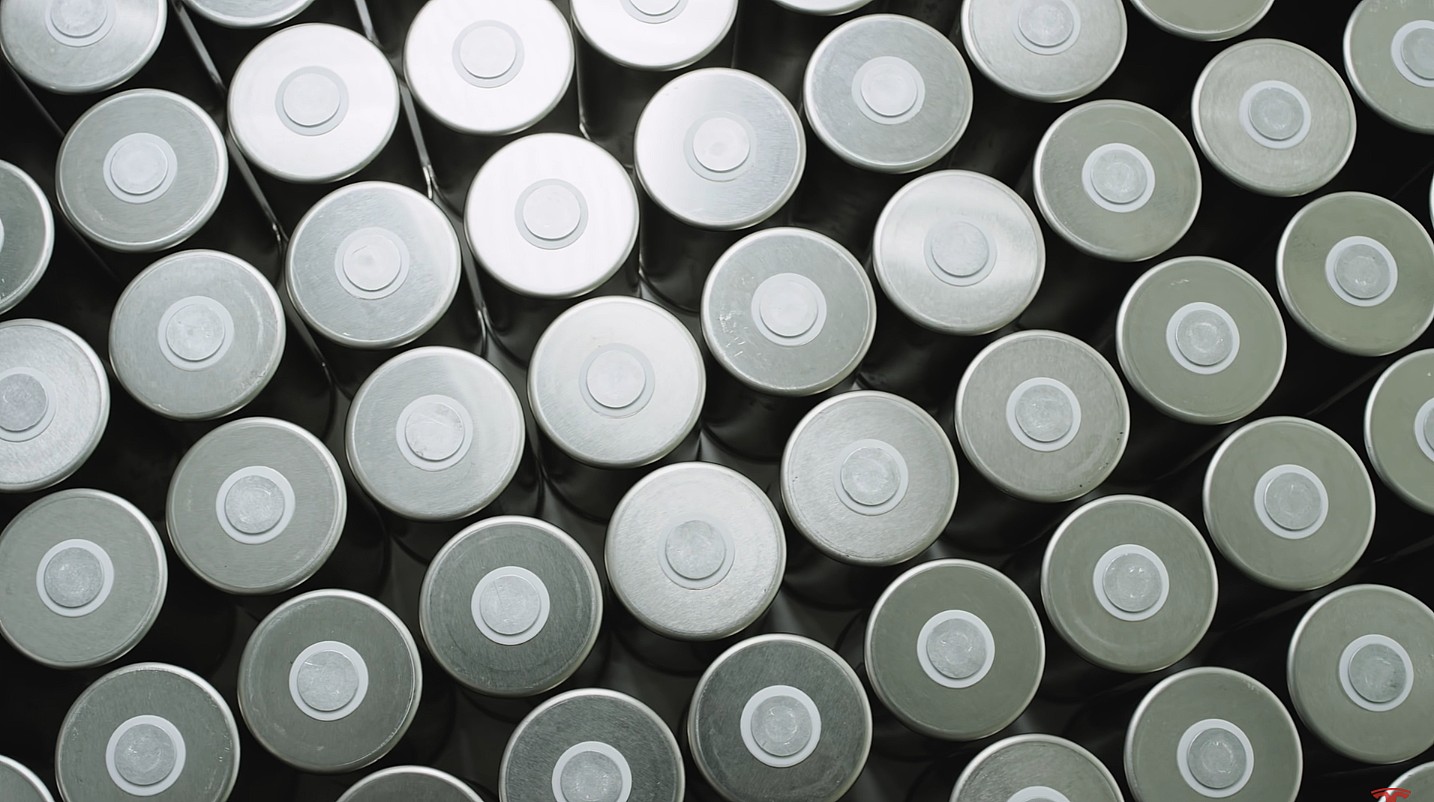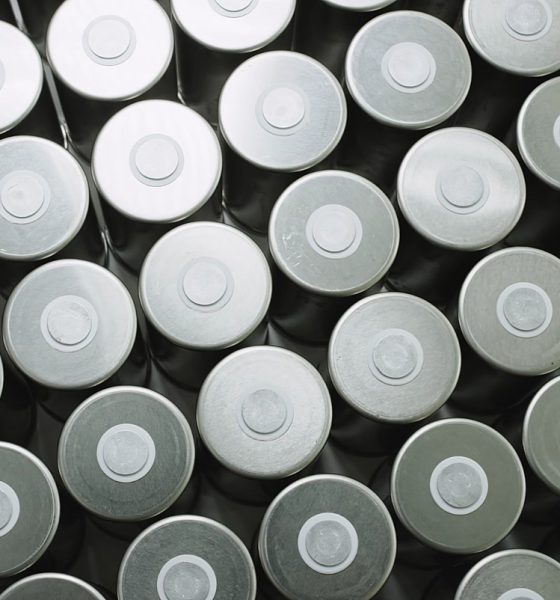

News
Toyota, Stellantis, Ford, and other OEMs begin serious battery production push
It seems like legacy automakers, including Toyota, Stellantis, Ford, and General Motors, are starting to embrace the EV transition. Detroit’s Big 3 and Toyota all announced investments in battery plants these last few weeks. These indicate that veteran automakers are taking a serious step toward mass electric vehicle production.
Toyota’s US Battery Plant
On Monday, Toyota announced plans to invest $3.4 billion in battery development and production within the United States. The Japanese automaker plans to strengthen its position in North America with the investment, including a $1.3 billion EV battery plant to produce in-house cells under a new company.
The battery facility will initially produce batteries for hybrids. It will work with Toyota Tsusho Corporation, which has a Metals Division that focuses on vehicle weight reduction and electrification functionalities. Toyota expects the battery plant to start production in 2025 and expand through 2031, offering about 1,750 jobs.
Stellantis & LG’s Partnership
On the same day Toyota announced its North American investment, Stellantis made one of its own. In a press release, Stellantis announced a joint venture with LG Energy Solution to produce lithium-ion batteries in North America. The automaker plans to start building a new battery plant by Q1 2024.
Stellantis expects its new battery plant to have an annual production capacity of 40 GWh. The cells produced at the plant will supply Stellantis assembly plants in the United States, Canada, and Mexico to produce electric vehicles and plug-in hybrids.
The remaining two automakers that make up the Detroit 3—Ford and General Motors—announced battery investment plans a few weeks before Stellantis.
Ford plans to invest $11.4 billion in electric vehicle production, and most of the investment will go towards battery development. Along with SK Innovation, the legacy automaker plans to invest in three battery plants in Tennessee and Kentucky.
Meanwhile, General Motors announced it would be building a battery cell research and innovation facility in Michigan called the Wallace Battery Cell Innovation Center. The facility is already under construction. GM expects the center to be entirely built by mid-2022.
Legacy auto and the EV transition
The announcements mentioned above are a significant step for legacy OEMs in terms of the EV transition. It was only recently that traditional automakers even took the electric vehicle market seriously. Even now, some automakers are unsure about the future of EVs in the global car market.
“All of us are trying to get a fix on how customers will accept electric vehicles,” said Chris Reynolds, chief administrative officer for Toyota in North America, to The Associated Press. “We don’t know for sure, but we have to be ready.”
However, consumers are showing more interest in new energy vehicles. According to consulting firm Alix Partners, EV sales could increase by 11% in 2025 and 24% in 2030. Currently, electric vehicles sales make up only ~4.8% of about 80 million new vehicles sales worldwide, based on LMC Automotive research.
The Teslarati team would appreciate hearing from you. If you have any tips, reach out to me at maria@teslarati.com or via Twitter @Writer_01001101.

Elon Musk
Elon Musk confirms xAI’s purchase of five 380 MW natural gas turbines
The deal, which was confirmed by Musk on X, highlights xAI’s effort to aggressively scale its operations.

xAI, Elon Musk’s artificial intelligence startup, has purchased five additional 380 MW natural gas turbines from South Korea’s Doosan Enerbility to power its growing supercomputer clusters.
The deal, which was confirmed by Musk on X, highlights xAI’s effort to aggressively scale its operations.
xAI’s turbine deal details
News of xAI’s new turbines was shared on social media platform X, with user @SemiAnalysis_ stating that the turbines were produced by South Korea’s Doosan Enerbility. As noted in an Asian Business Daily report, Doosan Enerbility announced last October that it signed a contract to supply two 380 MW gas turbines for a major U.S. tech company. Doosan later noted in December that it secured an order for three more 380 MW gas turbines.
As per the X user, the gas turbines would power an additional 600,000+ GB200 NVL72 equivalent size cluster. This should make xAI’s facilities among the largest in the world. In a reply, Elon Musk confirmed that xAI did purchase the turbines. “True,” Musk wrote in a post on X.
xAI’s ambitions
Recent reports have indicated that xAI closed an upsized $20 billion Series E funding round, exceeding the initial $15 billion target to fuel rapid infrastructure scaling and AI product development. The funding, as per the AI startup, “will accelerate our world-leading infrastructure buildout, enable the rapid development and deployment of transformative AI products.”
The company also teased the rollout of its upcoming frontier AI model. “Looking ahead, Grok 5 is currently in training, and we are focused on launching innovative new consumer and enterprise products that harness the power of Grok, Colossus, and 𝕏 to transform how we live, work, and play,” xAI wrote in a post on its website.
Elon Musk
Elon Musk’s xAI closes upsized $20B Series E funding round
xAI announced the investment round in a post on its official website.

xAI has closed an upsized $20 billion Series E funding round, exceeding the initial $15 billion target to fuel rapid infrastructure scaling and AI product development.
xAI announced the investment round in a post on its official website.
A $20 billion Series E round
As noted by the artificial intelligence startup in its post, the Series E funding round attracted a diverse group of investors, including Valor Equity Partners, Stepstone Group, Fidelity Management & Research Company, Qatar Investment Authority, MGX, and Baron Capital Group, among others.
Strategic partners NVIDIA and Cisco Investments also continued support for building the world’s largest GPU clusters.
As xAI stated, “This financing will accelerate our world-leading infrastructure buildout, enable the rapid development and deployment of transformative AI products reaching billions of users, and fuel groundbreaking research advancing xAI’s core mission: Understanding the Universe.”
xAI’s core mission
Th Series E funding builds on xAI’s previous rounds, powering Grok advancements and massive compute expansions like the Memphis supercluster. The upsized demand reflects growing recognition of xAI’s potential in frontier AI.
xAI also highlighted several of its breakthroughs in 2025, from the buildout of Colossus I and II, which ended with over 1 million H100 GPU equivalents, and the rollout of the Grok 4 Series, Grok Voice, and Grok Imagine, among others. The company also confirmed that work is already underway to train the flagship large language model’s next iteration, Grok 5.
“Looking ahead, Grok 5 is currently in training, and we are focused on launching innovative new consumer and enterprise products that harness the power of Grok, Colossus, and 𝕏 to transform how we live, work, and play,” xAI wrote.
Investor's Corner
Tesla gets price target bump, citing growing lead in self-driving

Tesla (NASDAQ: TSLA) stock received a price target update from Pierre Ferragu of Wall Street firm New Street Research, citing the company’s growing lead in self-driving and autonomy.
On Tuesday, Ferragu bumped his price target from $520 to $600, stating that the consensus from the Consumer Electronics Show in Las Vegas was that Tesla’s lead in autonomy has been sustained, is growing, and sits at a multiple-year lead over its competitors.
CES 2026 validates Tesla’s FSD strategy, but there’s a big lag for rivals: analyst
“The signal from Vegas is loud and clear,” the analyst writes. “The industry isn’t catching up to Tesla; it is actively validating Tesla’s strategy…just with a 12-year lag.”
The note shows that the company’s prowess in vehicle autonomy is being solidified by lagging competitors that claim to have the best method. The only problem is that Tesla’s Vision-based approach, which it adopted back in 2022 with the Model 3 and Model Y initially, has been proven to be more effective than competitors’ approach, which utilizes other technology, such as LiDAR and sensors.
Currently, Tesla shares are sitting at around $433, as the company’s stock price closed at $432.96 on Tuesday afternoon.
Ferragu’s consensus on Tesla shares echoes that of other Wall Street analysts who are bullish on the company’s stock and position within the AI, autonomy, and robotics sector.
Dan Ives of Wedbush wrote in a note in mid-December that he anticipates Tesla having a massive 2026, and could reach a $3 trillion valuation this year, especially with the “AI chapter” taking hold of the narrative at the company.
Ives also said that the big step in the right direction for Tesla will be initiating production of the Cybercab, as well as expanding on the Robotaxi program through the next 12 months:
“…as full-scale volume production begins with the autonomous and robotics roadmap…The company has started to test the all-important Cybercab in Austin over the past few weeks, which is an incremental step towards launching in 2026 with important volume production of Cybercabs starting in April/May, which remains the golden goose in unlocking TSLA’s AI valuation.”
Tesla analyst breaks down delivery report: ‘A step in the right direction’
Tesla has transitioned from an automaker to a full-fledged AI company, and its Robotaxi and Cybercab programs, fueled by the Full Self-Driving suite, are leading the charge moving forward. In 2026, there are major goals the company has outlined. The first is removing Safety Drivers from vehicles in Austin, Texas, one of the areas where it operates a ride-hailing service within the U.S.
Ultimately, Tesla will aim to launch a Level 5 autonomy suite to the public in the coming years.








